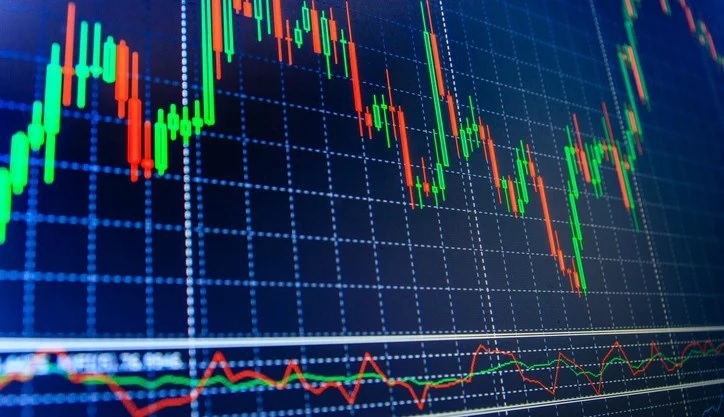What are the three types of forex analysis?

The world of foreign exchange, commonly referred to as forex, can be intimidating for those new to it. Achieving success in this highly volatile market demands a deep and nuanced understanding of the various factors influencing currency values. Traders often rely on a process known as forex analysis to gain this understanding, which can be broadly categorised into three types: Fundamental, Technical, and Sentiment analysis.
Each of these trading approaches offers a unique perspective and contributes to the decision-making process of traders. By combining insights from all three types of analysis, traders can make more informed and well-rounded decisions in the ever-changing world of forex trading.
Fundamental analysis
Fundamental analysis is a comprehensive approach that evaluates a currency’s intrinsic value by considering many macroeconomic indicators. These indicators encompass interest rates, economic growth rates, inflation, and political stability. Traders who employ this method firmly believe that understanding these fundamental factors is crucial in determining the actual value of a currency and making predictions about its future movements.
For instance, a strong economy is likely to attract foreign investment, which in turn can drive up the value of its currency, which happens as investors seek to capitalise on the potential for higher returns and more excellent stability offered by a robust economic environment. By examining and analysing these fundamental factors, traders can gain valuable insights into the currency market dynamics and make more informed trading decisions.
Technical analysis
Technical analysis is a prevalent trading approach that relies on statistical trends derived from historical market data, including price and volume. Traders employing this method meticulously study charts and utilise a range of tools to identify intricate patterns and discern emerging trends in the market. The underlying belief is that the past performance of a forex trade can offer valuable insights into future behaviour.
Some commonly used techniques in technical analysis are moving averages, support, and resistance levels. While this approach may appear purely mathematical, it also requires a certain level of interpretation and expertise to understand the financial markets and make informed trading decisions.
Sentiment analysis
Sentiment analysis, the third type of forex analysis, is a powerful tool that focuses on understanding the overall mood or psychology of the market. It argues that traders’ perceptions and attitudes towards a currency significantly influence its price movement.
By carefully studying and analysing surveys, market news, and even open interest data in futures contracts, sentiment analysts can gauge investors’ sentiment more accurately. This deep understanding of market sentiment enables them to better predict market trends and potential price movements. With the help of sentiment analysis, forex traders in the UK can get a competitive edge and make more informed trading decisions.
Advantages and disadvantages
While each type of forex analysis presents unique advantages, they also have inherent limitations. For instance, fundamental analysis provides an in-depth understanding of a currency’s intrinsic value, but it can be time-consuming and requires a comprehensive knowledge of macroeconomics.
Conversely, its reliance on historical data and statistical trends makes technical analysis more straightforward and time-efficient. However, it assumes that history will repeat itself, which is only sometimes valid. Sentiment analysis, while valuable, is less quantifiable and could be affected by several external factors like news events or market rumours.
Combining the three types
A well-rounded forex trading strategy typically involves a combination of fundamental, technical, and sentiment analysis. This integrated approach allows traders to benefit from the strengths of each type while mitigating their weaknesses, ultimately increasing their chances of success in the market.
Fundamental analysis, for instance, can provide a more profound and thorough understanding of the underlying factors that drive currency valuations. Traders can develop a long-term strategy considering broader market trends by studying economic indicators, interest rates, geopolitical events, and other relevant factors.
Technical analysis focuses on the historical price data and patterns to find the best potential entry and exit points. By analysing charts, trend lines, support and resistance levels, and various technical indicators, traders in the UK can make more informed financial decisions about when to enter or exit a trade.
In addition to fundamental and technical analysis, sentiment analysis is critical in forex trading. It involves gauging market sentiment and understanding the emotions and psychology of traders. By monitoring news, social media, and other sources, traders can gain insights into market sentiment, which can help them predict potential swings in market trends.
By combining these different analyses, traders can develop a comprehensive strategy considering macroeconomic factors and the micro-level market dynamics. This holistic approach allows traders to make more informed decisions, manage risk effectively, and potentially maximise their profits in the forex market.
With that said
Forex analysis is an indispensable tool in a trader’s arsenal, offering insights into market trends and potential trading opportunities. While Fundamental and Technical analyses are rooted in measurable economic indicators and historical data, Sentiment analysis offers a more intangible yet powerful perspective based on market psychology.
Choosing which analysis method to use depends mainly on a trader’s goals, risk tolerance, and trading style. However, a comprehensive trading strategy often incorporates all three, leveraging their unique strengths to navigate the complex and dynamic forex market.






